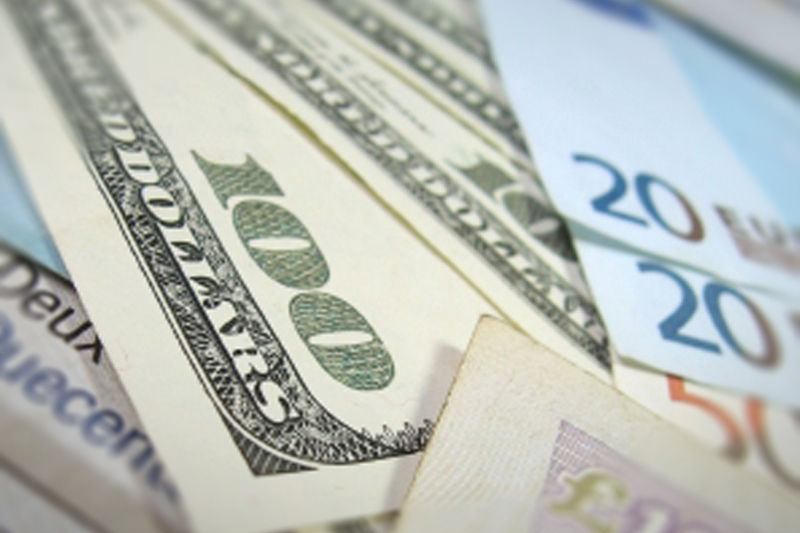Investing.com -- EUR/USD fell considerably on Tuesday, as the dollar held onto gains ahead of Wednesday's highly anticipated announcement from the Federal Reserve, when the U.S. central bank is widely expected to raise short-term interest rates.
The currency pair traded in a broad range between 1.0903 and 1.1059 in Tuesday's session, before settling at 1.0926, down 0.60% on the session. EUR/USD has been relatively flat since the European Central Bank rattled global foreign exchange markets earlier this month by only approving limited easing measures with its comprehensive asset-purchasing program aimed at staving off deflation in the euro zone. With a little more than two weeks left in the calendar year, the euro is down nearly 10% against the dollar in 2015.
EUR/USD likely gained support at 1.0538, the low from December 3 and was met with resistance at 1.1413, the high from Oct. 14.
On Tuesday morning, the U.S. Department of Labor reported that its CPI Index remained unchanged in November from the previous month, in line with analysts' expectations. On a yearly basis, the CPI index edged up by 0.5% over the last 12 months, considerably above gains of 0.2% in October.
The Core CPI Index, which strips out volatile food and energy prices, gained 0.2% on the month, also in line with analysts' forecasts. Over the last year, Core CPI has increased by 2.0%, slightly above October's gains of 1.9%. Long-term inflation has remained below the Fed's targeted goal of 2% for every month over the last three years. The Fed's preferred gauge, the Core PCE index, has hovered around 1.25% over the last several months.
In a speech earlier this month, Fed chair Janet Yellen noted that while improving conditions in the U.S. economy have met the Federal Open Market Committee's expectations since it last met in October, she emphasized that long-term inflation still remains considerably below the Fed's target. Although the FOMC estimated that Core PCE inflation will pick up noticeably next year and will rise further in 2017, it also projected that long-term inflation will not reach 2% until 2018.
The Federal Funds Rate, the Fed's benchmark rate offered on interbank, overnight loans, has remained at its current level between zero and 0.25% since December, 2008, shortly after the start of the Financial Crisis. Any increase of the targeted range for the Federal Funds Rate is expected to be modest at 25 basis points. The FOMC last approved a rate hike in June, 2006. Yellen has continually argued in recent months that the timing of lift-off will pale in comparison to the gradual path of upward moves over the next year.
A rate hike is largely viewed as bullish for the dollar as foreign investors pile into the greenback in order to capitalize on higher yields.
The U.S. Dollar Index, which measures the strength of the greenback versus a basket of six other major currencies, gained more than 0.50% to an intraday high of 98.34, before closing at 98.21. In early-December, the index surged above 100 to reach a fresh 12-month high.
Yields on the U.S. 10-Year gained roughly four basis points to stabilize at 2.268%. Bond yields on 10-year U.S. Treasuries had fluctuated wildly in the previous two sessions, ahead of the Fed's decision.
